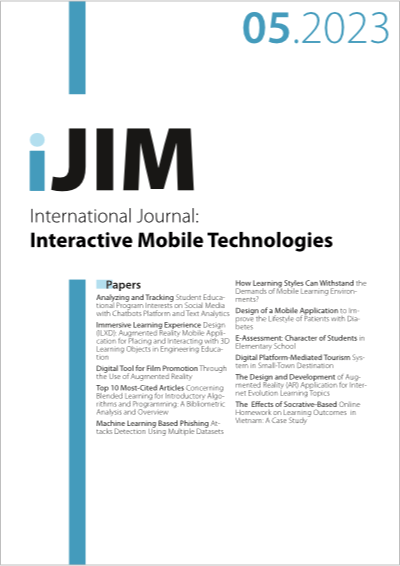The Design and Development of Augmented Reality (AR) Application for Internet Evolution Learning Topics
DOI:
https://doi.org/10.3991/ijim.v17i05.36483Keywords:
Augmented Reality (AR); ADDIE Model; ICT courseAbstract
Education field has seen numerous revolutions and innovations that have altered the teaching and learning process through the emergence of Information and Communications Technology (ICT) which provides numerous benefits to both educators and students. However, there is concern that students focus in the classroom becomes less due to the lack of pleasurable during the teaching and learning sessions. Thus, the existence of learning using Augmented Reality (AR) applications seems to help students improve their thinking skills in terms of cognitive as well as behaviourism. Therefore, this study proposed the Design and Development of Augmented Reality (AR) Application for Internet Evolution Learning Topics known as AREvo. The methodology used in this study was based on a design and development research (DDR) and ADDIE Model were used for designed and developed AREvo. Several platforms and software were used to develop AREvo. Several experts in Creative Multimedia field from higher education were appointed to evaluate the AREvo in terms of its functionality, content design, interaction design and presentation. The data analyze and obtained is in the form of frequency and feedback. Result revealed that AREvo application can be used as an additional material for instructors as well as students who are taking basic ICT course. In addition, AREvo is expected to provide a positive impact in terms of functionality and usability of this AR application in the present and also in the future.
Downloads
Published
How to Cite
Issue
Section
License
Copyright (c) 2023 HASHIM SUHAIZAL, Khairul Anuar Abdul Rahman, Nurhani Khamis , Ummi Hanani Shukor, Noor Hidayah Che Lah, Nurul Nadwa Zulkifli

This work is licensed under a Creative Commons Attribution 4.0 International License.



